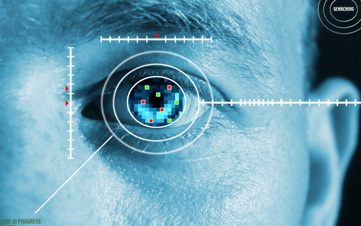
Sometimes, modern medicine pushes past science and into the realm of science fiction. The artificial heart and hip replacements were certainly in that category, giving rise to the idea of a bionic man or woman. Other breakthroughs have less of a "wow" factor, but offer relief and comfort where once there was pain and suffering.
Here are eight medical breakthroughs just over the horizon that could have a profound impact on your life. (Alas, a cure for the common cold is not on the list.)

Halting High Blood Pressure
Here's a breakthrough with a sci-fi feel: lowering high blood pressure with radio waves. About half of the 1.2 billion people worldwide with high blood pressure aren't controlling it, and 20% of them don't respond to conventional treatment.
Researchers have found that some radio frequencies will disable certain nerves in kidneys to significantly lower blood pressure. The treatment involves threading a catheter through an artery in the groin, but doesn't require major surgery.
The treatment, already approved in Europe, should be widely available in the U.S. in about two years. Medtronic is conducting the first U.S. trial.

Help for the Heart
There have been great strides in the use of metal stents to open clogged arteries and in repairing or replacing defective valves. Soon such procedures will become less invasive.
Instead of using a metal stent to open a blocked artery and restore blood flow, Abbott Laboratories is testing a temporary stent that dissolves after two years, leaving behind a healed blood vessel. Abbott is also working on a clip to close a dysfunctional mitral valve. It's delivered by catheter rather than through open heart surgery. Both items are already on the market in Europe.
A replacement heart valve is also coming, from Edwards Life Sciences. Most valve swaps involve open heart surgery with the heart temporarily stopped. This valve would be placed intravenously, with the heart still beating.

Hope for Diabetics
Look for an external artificial pancreas to hit the U.S. market within five years. That will be a boon for diabetics who have trouble keeping blood sugar levels in check.
The device monitors blood sugar and then administers and adjusts insulin automatically using a computerized insulin pump. One early version, which stops the flow of insulin when glucose levels are too low, is already available overseas and will begin U.S. trials this year.
Among companies involved in development: Medtronic, Dexcom, Insulet Corp. and Johnson & Johnson's Animas Corp.

Helping the Blind to See
An artificial retina is being developed by Second Sight Medical Products Inc. The technology, called Argus II, converts images from a tiny camera in a person's glasses into small electrical pulses transmitted to electrodes that are implanted on the retina. Vision is limited, but testing has enabled sightless people to find doors, sidestep obstacles and sort laundry. Some users can even read large print with the device's help. The device is available in Europe now but is likely a year or two away from approval for use in the U.S.
A new artificial cornea is also a couple of years away from the U.S. market. KeraMed Inc. is developing an implant that doesn't rely on donor tissue. There's enough tissue to treat only 1% of the 10 million cases of corneal blindness reported worldwide each year. The device, made of a proprietary material, is designed to replace the section of the cornea that focuses light, which is necessary to see.
This version is flexible, so it will require a smaller incision than other implants. That will mean a shorter recovery period and fewer complications.
Further down the road -- five years or so: a drug treatment from Lpath Inc. for macular degeneration, the leading cause of blindness in people over 65. The drug contains antibodies to neutralize molecules that contribute to abnormal growth of blood vessels in the retina. The out-of-control vessels distort central vision.

Taming the Tremors of Parkinson's
Preladenant, from Merck, is seen as an alternative to the existing therapy, L-dopa. But Parkinson's drugs often become less effective over time, so development of new drugs is vital.Enter Fipamezole, from Santhera Pharmaceuticals, which is seen as a promising treatment for the pronounced tremors associated with advanced cases of the disease. It's probably several years away from approval by the Food and Drug Administration, however.

Making Progress Against Cancer
There is no cure for cancer, but new approaches are being developed to aggressively fight some forms of the disease and to limit debilitating side effects.
Vaccines to treat pancreatic and ovarian cancers, melanoma, multiple myeloma and a form of lung cancer are in development but have not yet moved into the FDA approval pipeline.
Also coming: ridaforolimus, from Merck, to treat soft tissue and bone sarcomas; CPI-613, from Cornerstone Pharmaceuticals, to treat pancreatic cancer; cabozantinib, from Exelixis Inc., for prostate, ovarian and liver cancers; and Multikine, from CEL-SCI, for treating advanced head and neck cancers.

Easing the Pains of Aging
Up to 40% of adults who have rheumatoid arthritis don't respond adequately to approved treatments. Help for them may come in the form of tofacitinib, a drug in development by Pfizer that inhibits enzymes that contribute to inflammation.Meanwhile, Merck is a year away from seeking FDA approval for odanacatib, a once-a-week treatment for osteoporosis.
One-quarter of those with bone density weakness can't tolerate the most common drugs to treat it, so the alternative will be welcome news for the 10 million people in the U.S., mostly women, with the disease.


Profit and prosper with the best of Kiplinger's advice on investing, taxes, retirement, personal finance and much more. Delivered daily. Enter your email in the box and click Sign Me Up.
-
 The Best Vanguard Bond Funds to Buy
The Best Vanguard Bond Funds to BuyInvestors seeking the best Vanguard bond funds can pick between mutual funds and ETFs spanning maturities, credit qualities, tax treatment and geographies.
-
 Are You Afraid of an IRS Audit? 8 Ways to Beat Tax Audit Anxiety
Are You Afraid of an IRS Audit? 8 Ways to Beat Tax Audit AnxietyTax Season Tax audit anxiety is like a wild beast. Here’s how you can help tame it.
-
 The Kiplinger Letter's 10 Forecasts for 2026
The Kiplinger Letter's 10 Forecasts for 2026The Kiplinger Letter Here are some of the biggest events and trends in economics, politics and tech that will shape the new year.
-
 What to Do With Your Tax Refund: 6 Ways to Bring Growth
What to Do With Your Tax Refund: 6 Ways to Bring GrowthUse your 2024 tax refund to boost short-term or long-term financial goals by putting it in one of these six places.
-
 What Does Medicare Not Cover? Eight Things You Should Know
What Does Medicare Not Cover? Eight Things You Should KnowMedicare Part A and Part B leave gaps in your healthcare coverage. But Medicare Advantage has problems, too.
-
 15 Reasons You'll Regret an RV in Retirement
15 Reasons You'll Regret an RV in RetirementMaking Your Money Last Here's why you might regret an RV in retirement. RV-savvy retirees talk about the downsides of spending retirement in a motorhome, travel trailer, fifth wheel, or other recreational vehicle.
-
 The Six Best Places to Retire in New England
The Six Best Places to Retire in New Englandplaces to live Thinking about a move to New England for retirement? Here are the best places to land for quality of life, affordability and other criteria.
-
 The 10 Cheapest Countries to Visit
The 10 Cheapest Countries to VisitWe find the 10 cheapest countries to visit around the world. Forget inflation and set your sights on your next vacation.
-
 15 Ways to Prepare Your Home for Winter
15 Ways to Prepare Your Home for Winterhome There are many ways to prepare your home for winter, which will help keep you safe and warm and save on housing and utility costs.
-
 Six Steps to Get Lower Car Insurance Rates
Six Steps to Get Lower Car Insurance Ratesinsurance Shopping around for auto insurance may not be your idea of fun, but comparing prices for a new policy every few years — or even more often — can pay off big.
-
 How to Increase Credit Scores — Fast
How to Increase Credit Scores — FastHow to increase credit scores quickly, starting with paying down your credit card debt.
